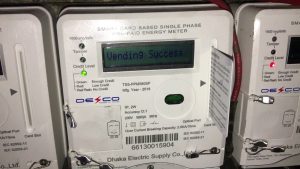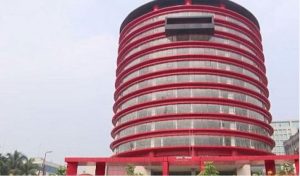Mostafa Kamal Majumder
Recent official information and statistics affirm, Bangladesh is on track to achieve the Sustainable Development Goals (SDGs). With four years of the 15-year time span to achieve 17 goals already spent, a government report says, ‘Bangladesh is performing well in various aspects including poverty reduction, gender equality, electricity, sanitation and annual GDP growth.’
Being ahead of other neighbouring countries of South Asia in human development indices, Bangladesh found its achievement of the millennium development goals relatively easy, because the country had already achieved some of the MDG goals before those were set. The remarkable achievement in access to sanitation in recent years under a joint government-NGO drive led to improvements in the public health situation which apparently contributed to raising life expectancy in the country to 72 years.
A close look, however, reveals that all these progresses are yet to adequately sharpen the focus on the sustainability of development that the huge chain of activities is meant for.
The above-mentioned report says, Bangladesh has made good progress on the first three SDGs pertaining to ending poverty, hunger and improving public health, and is on track to achieve the targets. Among the challenges identified so far, is the lack of proper data. Bangladesh has data for only 70 indicators out of the 232 prescribed by the United Nations to assess the progress of SDGs. The government highlights the need for improved international cooperation and support to meet 41 of 169 targets that fall within the 17 SDGs.
The sustained economic growth rate of 6 percent and above for years, has raised the per capita income to $1,736 USD in June 2018 according to available statistics. The life expectancy at birth has risen to 72.7 years – Male 71.1, female 74.4, as per The World Health Organisation’s latest assessments.
According to the recent government information, the rate of poverty is down to 21 percent from earlier 24 percent. An elaborate work programme has been taken up under the supervision of a senior official at the Prime Minister’s Office for monitoring the activities geared to achieving the SDGs by GOs and NGOs which are now working on the details of the targets and the indicators of the SDGs.
Yet, recent reports indicate a widening of the gap between the rich and the poor, and between urban and rural areas. Former Deputy Governor of the Bangladesh Bank Ibrahim Khaled has said the other day that Bangladesh’s wealth is being concentrated to five percent of the population who are rich at the expense of the majority. Every year workers of different industries are found to stage demonstrations for adequate wage, payment of arrear salary and benefits requiring the government’s intervention to settle disputes. Rich people are becoming richer, but their compliance with obligations to their workers and their rights shows gaps.
Rich people have also shaken the foundations of banks by further worsening the loan default culture with money coming from ordinary depositors. The latest discovery of impurities in 52 food items of well-known companies has shaken the confidence of consumers in the food producers. People aware of the profiteering motive of traders are afraid of buying fruits and vegetables from unknown retailers and vendors. In terms of siphoning away money, Bangladesh’s rich people are shown among the front-runners in the world by international organizations.
Another aspect is, the common property resources like rivers,
The development planners can ensure sustainable growth by making sure that the quality of life of people improves leaving no individual person or community behind. Sustainability also requires that the natural resources, based on which humans exist, should not be depleted or exploited beyond their regeneration limits. The plants and animal resources, plus and micro-organisms that flourish on land and water plus the aquatic resources which create an ecosystem that supports human life.
The alertness of the higher court to some of the malaise notwithstanding, the development outlook should not only concentrate on budgetary outlays, export earnings, import bills, GDP growth but also reflect on income distribution, welfare of the less fortunate population, and conservation of the common property resources that naturally sustain biological diversity, and see that few areas still remaining virgin are left unharmed.
The SDG strategy should also incorporate targets of bringing back to life the polluted or dead rivers, canals and creeks, the denuded forests, caring for the
(First published in The Asian Age Dhaka on May




